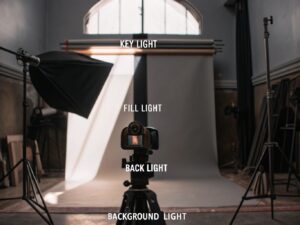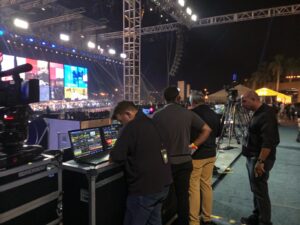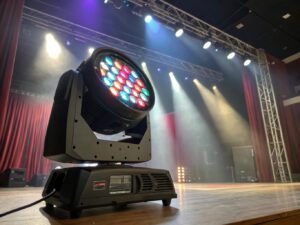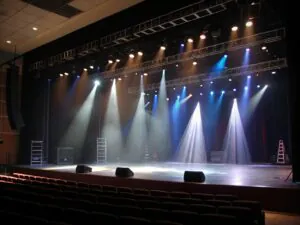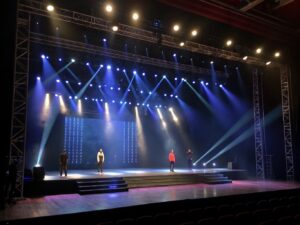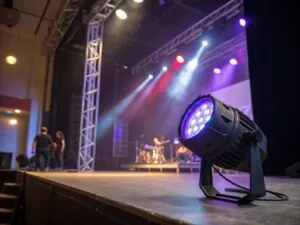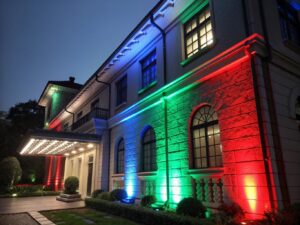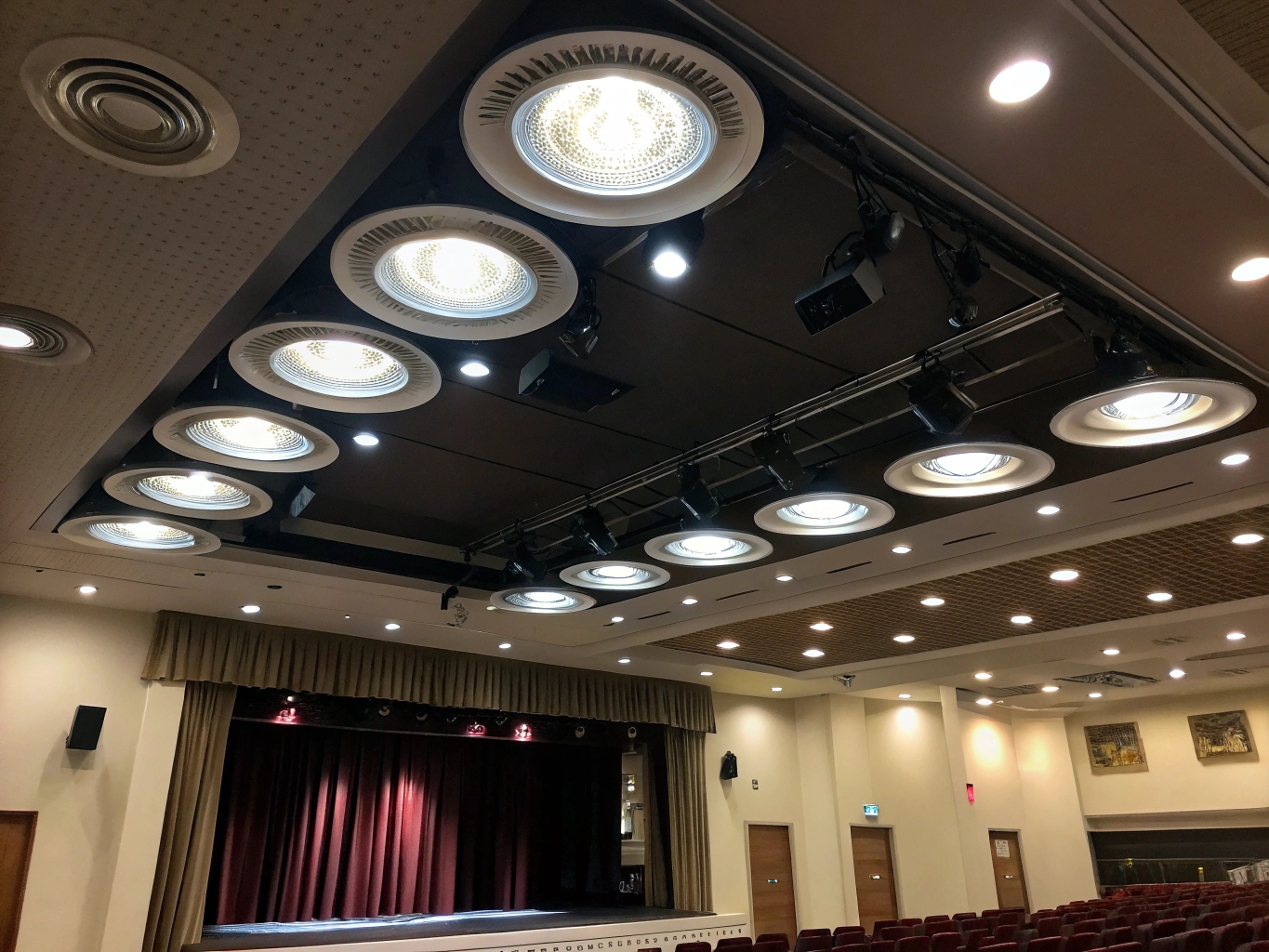
Do stage lights use regular light bulbs? If not, why?
Ever tried to light an actor with a lamp from your living room? The result is a dim, washed-out mess. Using the wrong light source on stage isn't just ineffective; it's unprofessional.
No, stage lights use specialized lamps or integrated LED engines, not regular household bulbs. This is because theatrical lighting demands immense brightness, precise optical control, specific color temperatures, and extreme durability that regular bulbs cannot provide.
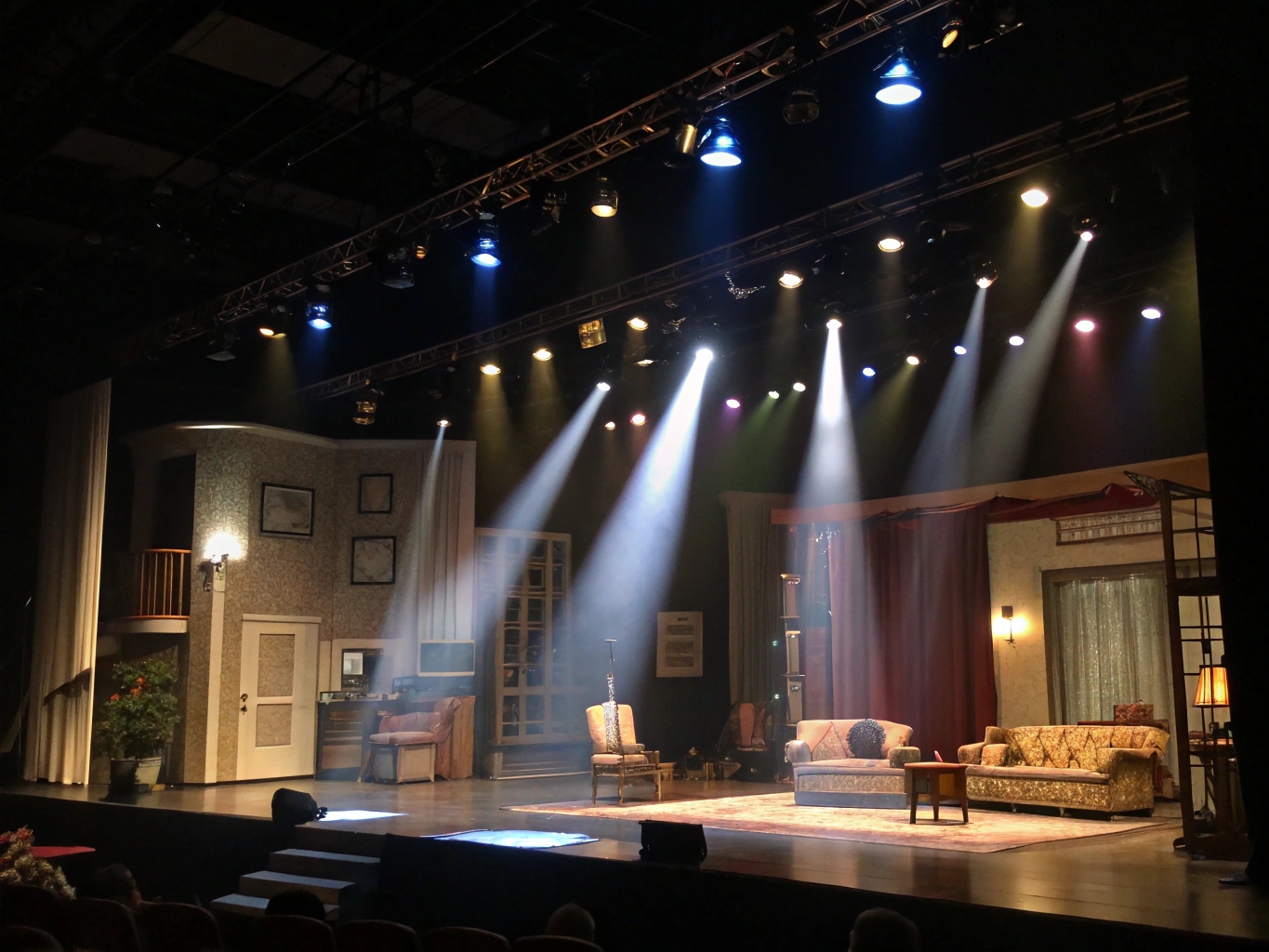
In my 19 years in this business, from hauling gear as a technician to running Monalight, this is one of the most fundamental truths I've learned. The "bulb" inside a stage light is the heart of the fixture, an engine built for performance. It's the difference between a flashlight and a laser beam. To truly understand why we can't just run to the hardware store for a replacement, we need to dive into the specific technologies that power our stages and explore why they are so different.
What type of light is used for stage lighting?
Are you confused by all the jargon like Tungsten, HMI1, and LED? Choosing the right light source is critical, as a wrong choice can compromise a show's entire look and feel.
Stage lighting primarily uses three source types: traditional tungsten-halogen for warm light, high-intensity discharge (HID) lamps2 for extreme brightness, and most commonly today, powerful solid-state LED engines for their efficiency and versatility.
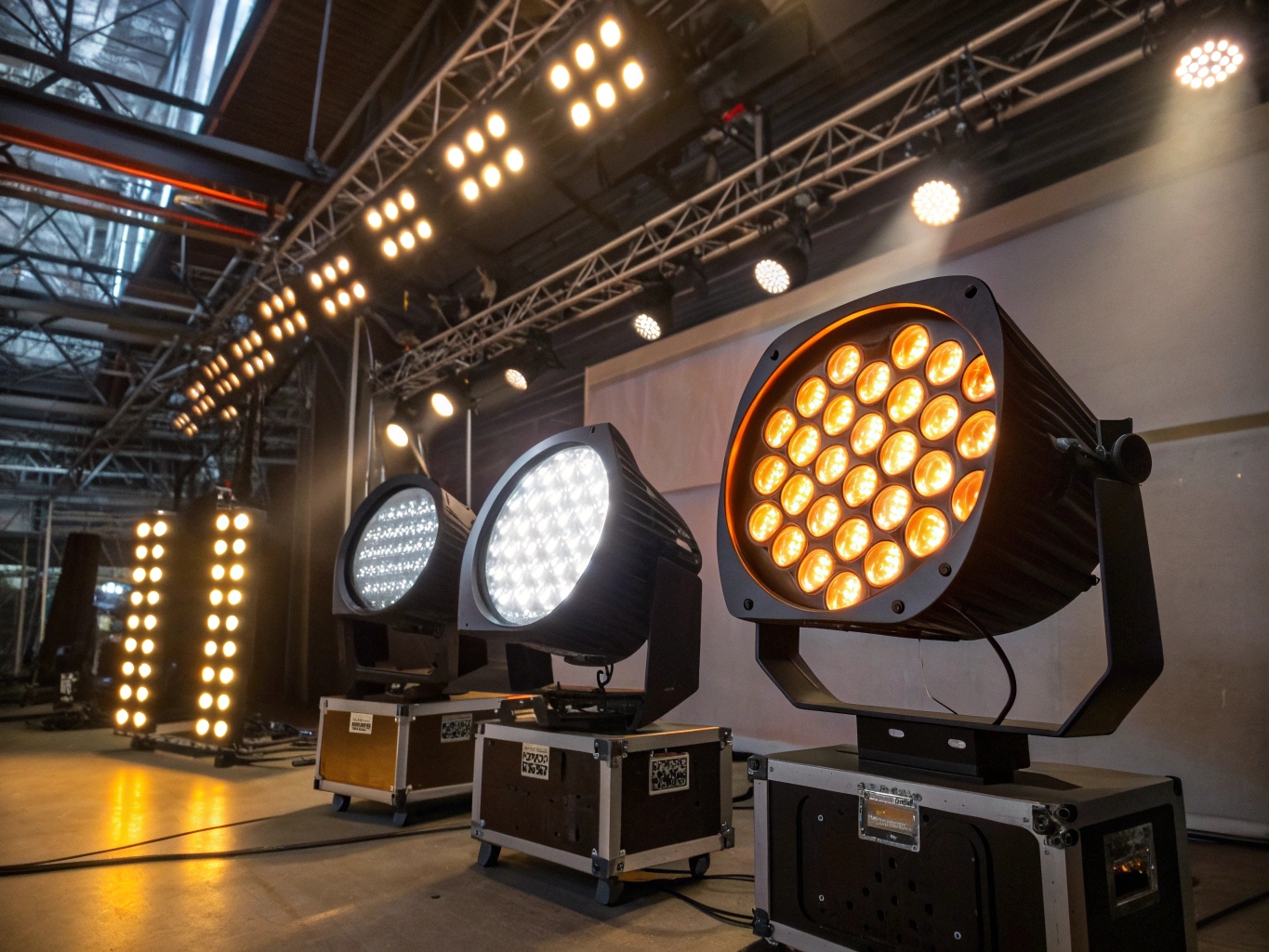
Each of these sources has its place. When I started out, nearly everything was tungsten-halogen. We loved it for the beautiful, warm quality of its light and the way it dimmed so naturally. But it was hot, terribly inefficient, and we spent half our lives changing burnt-out lamps and gel filters. Then came HID lamps, like HMIs, which were incredibly bright and essential for powerful moving heads and follow spots. But they have warm-up times and can't be dimmed electronically. Today, LED is king. As I always say at Monalight, "innovation is soul," and LEDs embody this. They are efficient, offer full color mixing3 without gels, and are incredibly long-lasting. For a technician like Nick, moving to LED means less maintenance, more creative options, and a much safer, cooler stage.
Light Source Comparison
| Source Type | Key Advantage | Key Disadvantage | Best For |
|---|---|---|---|
| Tungsten-Halogen | Beautiful warm light, smooth dimming. | Very hot, inefficient, short lifespan. | Traditional theatrical looks. |
| HID (Arc Lamp) | Immense brightness, high intensity. | Cannot dim, needs warm-up/cool-down. | Follow spots, large beam effects. |
| LED Engine | Efficient, versatile color, long life. | Higher initial cost, potential for poor CRI. | Almost all modern applications. |
Do recessed lights use regular bulbs?
Thinking the lights above the audience are just simple spotlights? Using the wrong house lights can ruin the atmosphere before the show even starts with flickers and uneven dimming.
No, professional recessed lights in a theater or venue do not use regular bulbs. They use specialized, fully dimmable lamps or, more commonly, integrated LED modules engineered for a smooth, consistent fade to absolute zero.
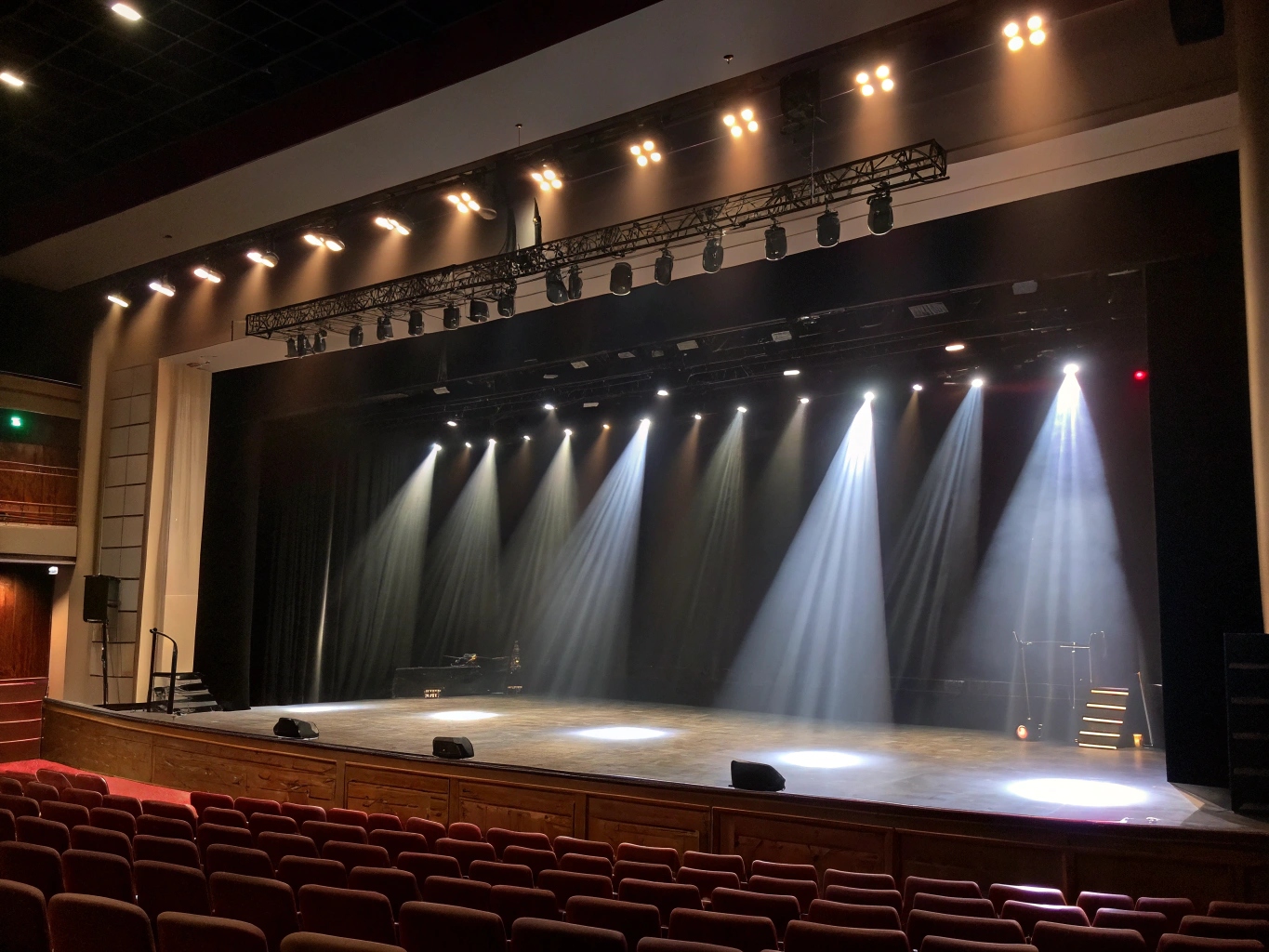
This is an excellent question because it highlights the attention to detail required in a performance space4. You can't just put a standard residential downlight in a theater ceiling. Why not? Because regular bulbs and their dimmers are not designed for a "theatrical fade." They will often flicker or "pop off" suddenly when they get to a low intensity. In a theater, the slow fade of the house lights is the signal that the performance is about to begin. It's a critical moment of transition. That fade must be perfectly smooth across dozens or even hundreds of fixtures simultaneously. That's why we use fixtures controlled by DMX, the same protocol used for the stage lights. It ensures every light dims in perfect unison, creating a seamless and professional experience for the audience. The principle of "quality is life" applies to every single light in the building, not just the ones pointed at the stage.
What light bulbs are best for stage houses?
Is your venue constantly dealing with the hassle and expense of changing burnt-out house lights? This endless maintenance cycle is a drain on resources that could be better spent elsewhere.
The best choice today is overwhelmingly integrated LED fixtures specifically designed for theatrical house lighting. They offer an extremely long life, huge energy savings, and the crucial ability to provide a smooth, warm-dimming curve5.
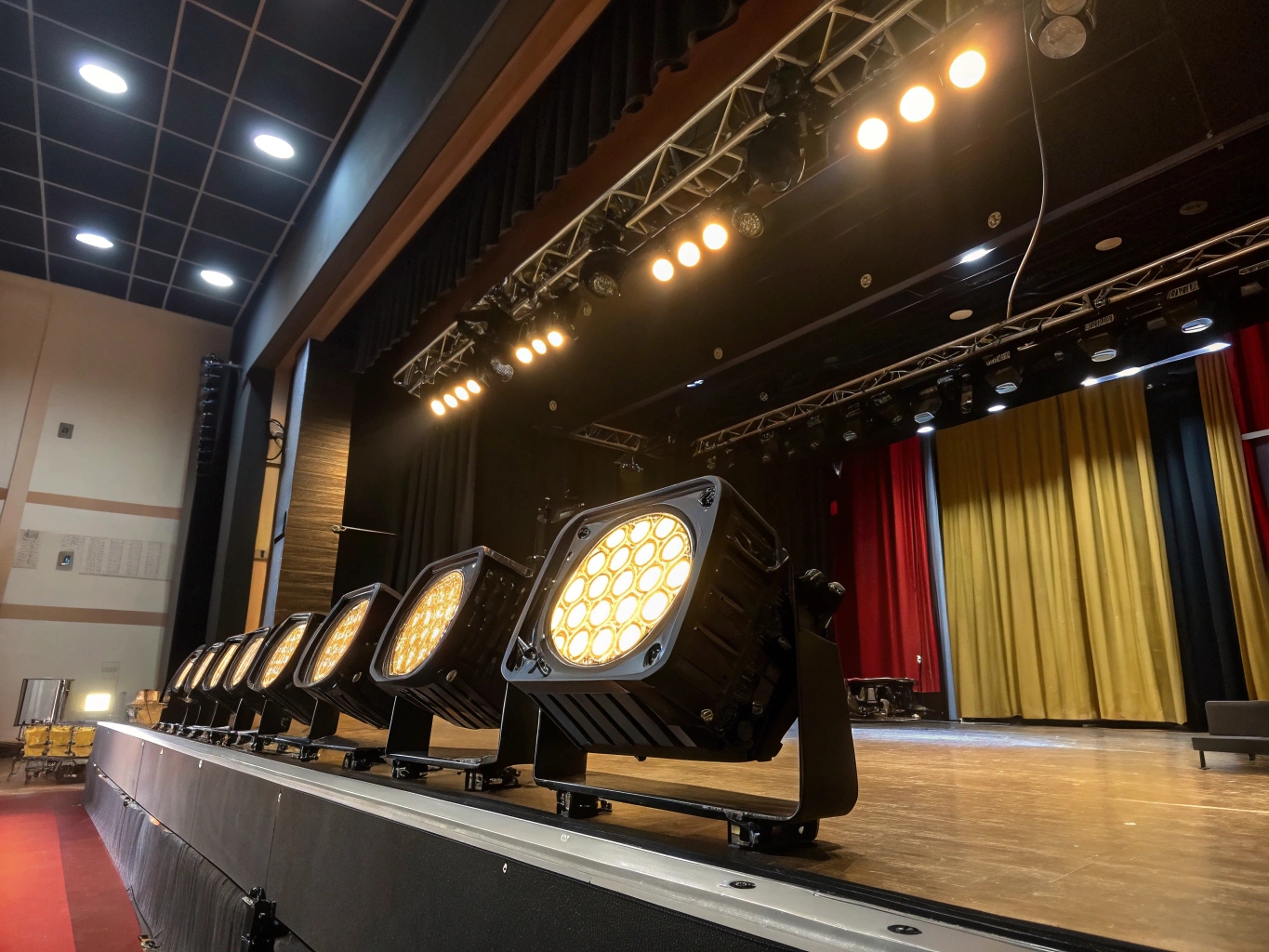
When a venue asks for my recommendation, I always point them towards high-quality, theatrical-grade LED downlights. The upfront cost is higher than a simple bulb, but the Total Cost of Ownership is far lower. First, the lifespan is massive—often 50,000 hours or more. This means you might go over a decade without changing a single "bulb," saving enormous amounts on labor and lift rentals. Second, the energy savings are significant, often reducing power consumption by 80-90% compared to old incandescent fixtures. But the most important feature for a performance space is the quality of the dimming. The best fixtures now have "warm-dim" technology. This means that as the light gets dimmer, the color temperature warms up, perfectly mimicking the beautiful, cozy glow of a dimming tungsten lamp. This preserves the classic theatrical feel while providing all the benefits of modern technology. It's the best of both worlds.
Why are stage lights so bright?
Ever set up your lights only to find they get completely lost and washed out on stage? A light that seems bright in a small room can seem uselessly dim from 50 feet away.
Stage lights must be intensely bright for three main reasons: to travel long distances (throw), to cut through atmospheric effects like haze, and to create clear focus by being visibly brighter than the surrounding light on stage.

This comes down to physics and psychology. First, light intensity diminishes exponentially over distance. For a light to be impactful on an actor who is 50-100 feet away from the fixture, it has to start with an incredible amount of output. We call this "throw." Second, a designer often uses multiple layers of light. For a spotlight to effectively isolate a performer, it needs to be significantly brighter than the general color wash behind them. This creates a visual hierarchy that tells the audience, "Look here." Finally, modern shows heavily use atmospheric effects6 like smoke and haze. Light needs to be powerful enough to cut through this haze and create those stunning mid-air beam effects. At Monalight, a huge part of our R&D is invested in optics—the lenses and reflectors that gather every possible bit of light from the engine and focus it efficiently. It’s not just about making a bright source; it’s about using that brightness with precision.
What is the most popular stage light?
If you were building a flexible lighting rig from scratch, where would you start? With so many choices, it's easy to feel lost and unsure of what fixture provides the most value.
While there's no single "most popular" light, the workhorse of most rigs is the LED PAR for color washes. For ultimate versatility, the hybrid moving head (combining beam, spot, and wash functions) is incredibly popular.

If you ask any technician like Nick what light they use most, they will almost certainly mention the LED PAR can. It's the foundational building block for lighting. It's relatively affordable, reliable, and provides the broad strokes of color that create the overall mood of a scene. It's the first light most people buy for their rig. However, the most sought-after light right now is the hybrid moving head. In the past, if you wanted sharp beams, you needed a beam fixture. If you wanted to project gobos, you needed a spot fixture. If you wanted a soft color wash, you needed a wash fixture. A hybrid fixture does all three jobs in one unit. This is a game-changer for rental houses and designers because it means you can create a huge variety of effects with fewer lights. It saves space on the truck, time during setup, and money in the budget. This is the kind of smart innovation we champion.
Conclusion
In conclusion, stage lights are not just "bulbs." They are specialized engines of light, engineered for brightness, control, and reliability to meet the immense demands of live performance.
-
Discover the benefits of HMI lights, known for their brightness and efficiency in professional lighting setups. ↩
-
Understand the role of HID lamps in providing extreme brightness for theatrical performances. ↩
-
Explore the techniques of color mixing in stage lighting and its impact on visual storytelling. ↩
-
Learn about the critical factors that contribute to effective performance space design. ↩
-
Explore the concept of warm-dimming curves and how they enhance the quality of theatrical lighting. ↩
-
Learn about atmospheric effects and how they enhance the visual experience in performances. ↩
You may also be interested in:
